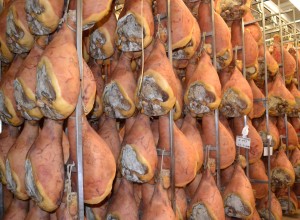The Globe and Mail is reporting that the U.S Agriculture Department has given the Canadian Food Inspection Agency until mid-March to fix significant food safety and sanitation concerns found during an audit of Canada’s meat, poultry and egg inspection systems.
 CFIA met the “core criteria” for overall food inspection, but American officials identified “operation weaknesses related to government oversight, plant sanitation and microbiological testing” for listeria, salmonella and E. coli, according to a final report submitted to CFIA on Jan. 14.
CFIA met the “core criteria” for overall food inspection, but American officials identified “operation weaknesses related to government oversight, plant sanitation and microbiological testing” for listeria, salmonella and E. coli, according to a final report submitted to CFIA on Jan. 14.
Failure to fix the deficiencies could lead the U.S. government to delist Canadian plants that were audited from exporting their products to the United States.
CFIA issued a statement to The Globe and Mail late Monday insisting that food safety was not compromised and steps are being taken to improve the inspection system.
“It is important to note that none of the audit findings posed a food safety risk to consumers, including the identified sanitation issues,” CFIA said. “At the time of the audit, the CFIA inspectors were already addressing the sanitation findings outlined in the audit report and the establishments were already taking the required steps to fix the issues in question.”
The U.S. Food Safety and Inspection Services (FSIS) conducted the audit between May 28 and June 13, 2014, of slaughter and processing plants in Ontario and Quebec.
The audit found CFIA does not conduct ongoing environmental sampling and testing in food-production plants for Listeria monocytogenes (Lm), the bacteria that contaminated cold cuts produced by Maple Leaf Foods in 2008 that resulted in the death of 22 Canadians.
Food-plant employees test the surfaces where ready-to-eat meat and poultry is packaged but “does not collect samples or test for the presence of Lm on non-food contact surfaces,” the audit said.
 U.S. auditors also raised concerns that plant inspectors are not checking for the presence of manure, ingesta or milk contamination on carcasses prior to the final wash. Tests are only done once the meat or poultry is in refrigeration units.
U.S. auditors also raised concerns that plant inspectors are not checking for the presence of manure, ingesta or milk contamination on carcasses prior to the final wash. Tests are only done once the meat or poultry is in refrigeration units.
“FSIS considers this sanitary measure to not be equivalent [to U.S. standards]. Because this is a significant finding that will impact the overall equivalency of the CFIA inspection system,” the audit said, “CFIA must respond with either correcting the location at which zero tolerance verification occurs or providing an appropriate rational for implementing an alternative inspection procedure within 60 days or FSIS will deem the inspection system to not be equivalent.”
The audit discovered serious sanitation problems in food-processing plants where meat is packaged before being shipped to stores in Canada and the United States. Auditors observed open ceilings, leaking condensate and rust that could contaminate food.
These are the type of sanitation problems that led to the largest meat recall in Canadian history in 2012 when E. coli was found in meat exported to the U.S. from a Brooks, Alta., plant, now owned by JBS Food Canada.
U.S. food inspectors detected the meat before it ended up on U.S. food shelves, but 18 people in Canada got sick from eating the tainted meat. CFIA blamed unsanitary conditions, poor hygiene and the Brooks plant’s failure to immediately disclose E. coli tests.

Canada’s Agriculture minister Gerry Ritz attends a meeting of the G8 and G5 agriculture ministers on April 18, 2009 at Castelbrando castle in Cison di Valmarino, northern Italy. Farm ministers from the world’s leading industrialised and developing nations meet in Italy this weekend for the first time to find ways of overcoming a global food crisis. AFP PHOTO / ANDREAS SOLARO (Photo credit should read ANDREAS SOLARO/AFP/Getty Images)
The U.S. audit includes written responses from CFIA that strongly objected to the findings, saying the report “paints an inaccurate picture of the actual situation” and insisting the agency was in the process of addressing the food-safety concerns.
Terrence McRae, the director of CFIA’s Food Import and Export division, even tried but failed to persuade the U.S. Agriculture Department to give the agency a better grade.
CFIA did update their manual to require improved testing for listeria, but said it’s unclear if companies are doing the inspections or CFIA. He was unaware of any plans to set up inspection stations before the final wash.









